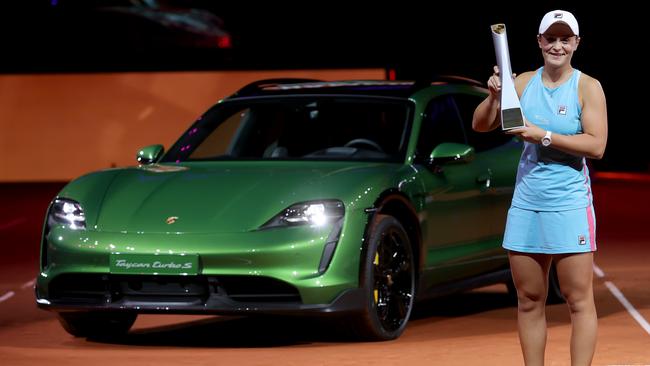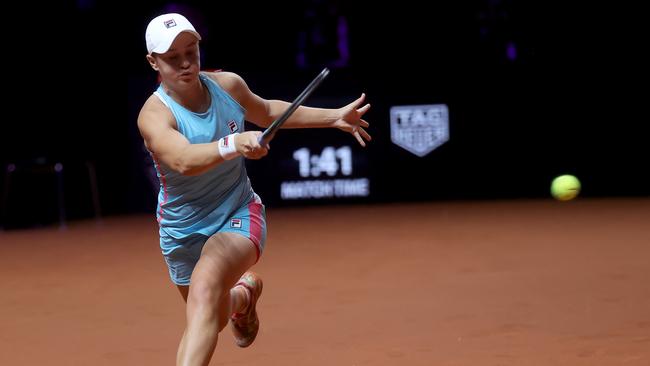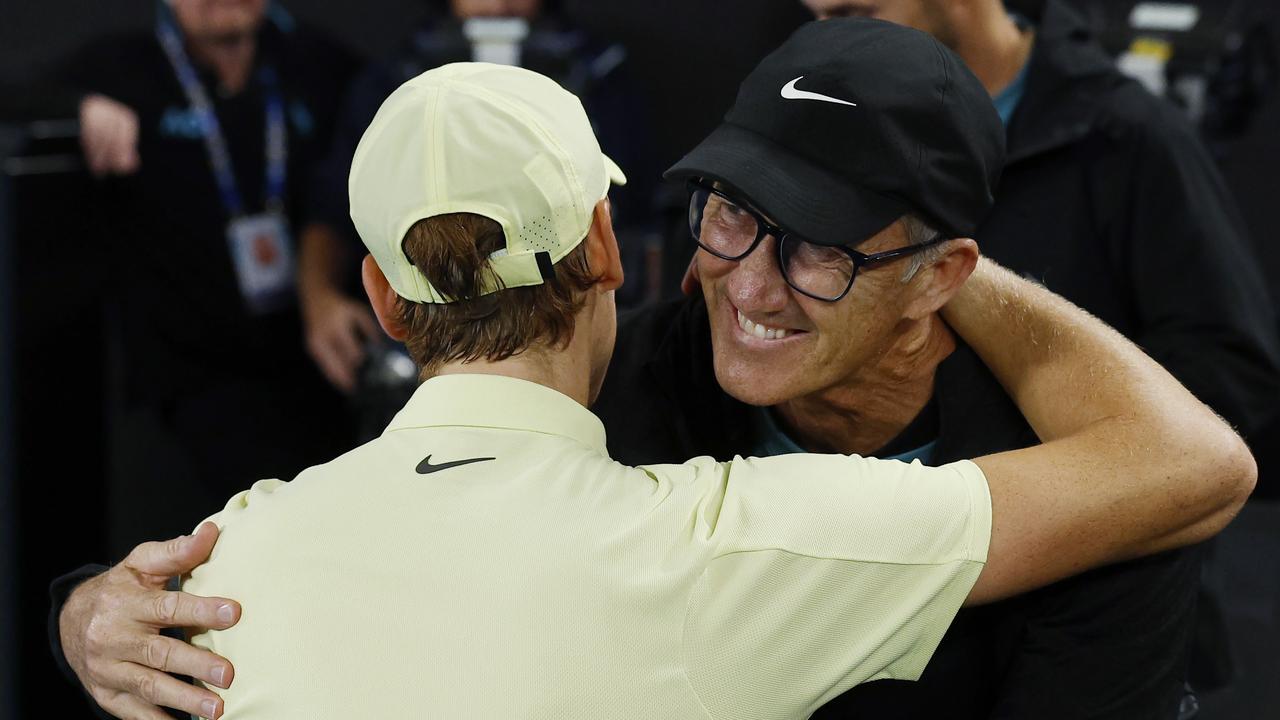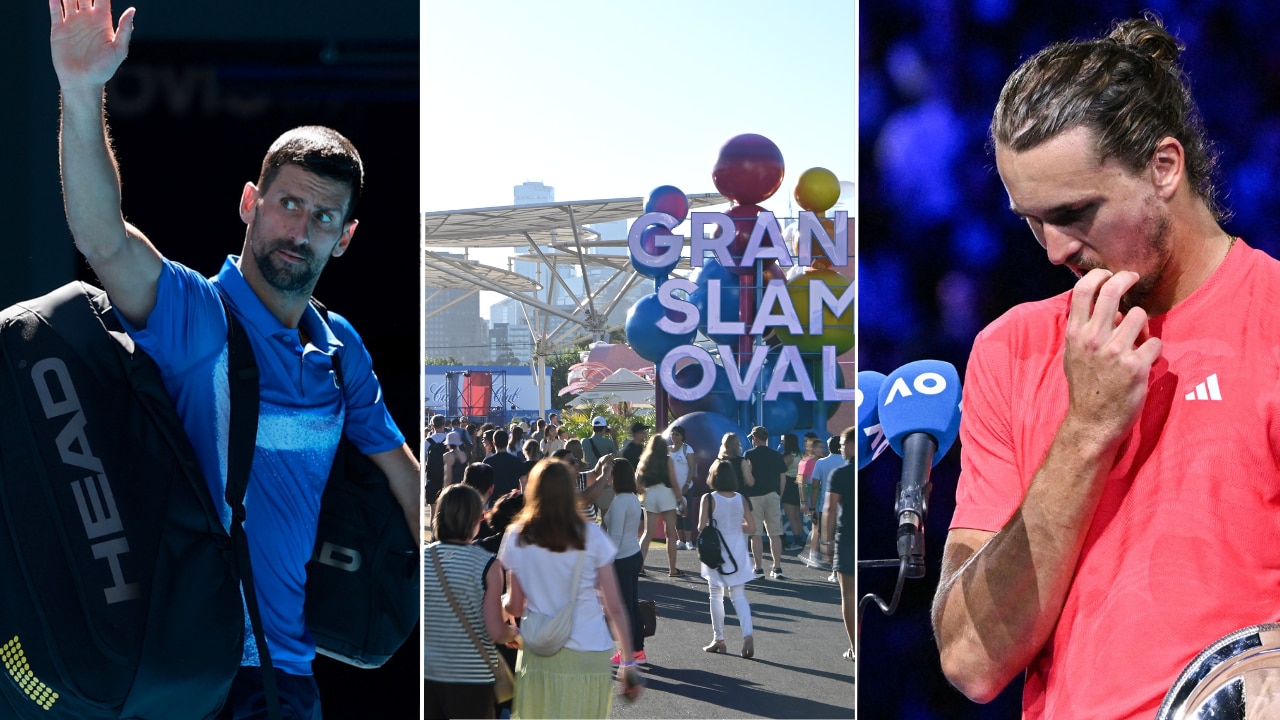Tennis: Modern tennis is a four-shot rally
Ash Barty’s win in the Stuttgart WTA final proved the stat about four-shot rallies being the new norm in tennis.

Want to improve your tennis? Master the four-shot rally.
Victory margins are insanely small in this sport. Ash Barty has banked another WTA title and been given the keys to a Porsche Taycan Turbo S Cross Turismo thanks to an acceptance of the fact she will win and lose a comparable number of points in any given match. The swing rarely changes from the 55-54 per cent ration. Which isn’t much. But the most staggering development in the modern era is what those points actually look like. More often than not, even among the pros, a rally goes no longer than four strokes.
Two statistics have passed my desk recently that have done what few statistics can do. Made me collapse in shock. The numbers have seemed too surprising to be true, so I tested them out in Barty’s 3-6 6-0 6-3 win over Aryna Sabalenka in the final of Porsche Tennis Grand Prix at Stuttgart.
She claimed the 11th WTA championship of her career, her third of the year, an $88,000 pay cheque and a car worth six times that amount.
Shock statistic No 1: the number one tennis players in the world win about 90 per cent of their matches in a calendar year. But in each match, they win only 55 per cent of the points. That doesn’t seem to add up. The long-term dominance comes from scraping through most matches? I imagine spending a year on tour – as if! – and at the end of it telling a mate I won 55 per cent of the points I played. Doesn’t sound too impressive … but it’s all you need to be the world No 1.
It helps one understand why professionals such as Barty don’t get flustered by losing a lot of points, as opposed to club and social players who can be devastated by one missed forehand. The idea is to understand and accept you’re going to lose nearly as many points as you win, which sort of takes the pressure off all of them.
The important thing is to win the right points. The break points. The set points. The 30-all and deuce points. A classic example is Novak Djokovic in 2015. He peeled off his record 82-6 win-loss record on tour, winning 93 per cent of his matches. But in the most dominant year any player has ever had, he won just 55 per cent of points.
Shock No 2: I found this incredible. The stat that 70 per cent per cent of rallies at all levels of tennis are four shots or less. That’s what I really wanted to test in Barty versus Sabalenka. I sat there and counted the shots per points. Apologies for being such a nerd. But If true, it would obliterate the idea that at all standards of tennis, you needed to master long and grinding rallies. What if we needed only two strong strokes to win the majority of points? Barty’s final was on clay, so surely the average would be above four.

The triumph was fairly routine against an injured Belarusian opponent who started crying at 0-3 in the final set. Even such a comprehensive match, in which Barty won nine straight games at one stage, saw her win just 56.4 per cent of the points.
Even more remarkable was the length of rallies. Watching the match without pen and paper, I would have thought it was a rather slogging duel, loaded with points of 10 or more shots. Not so, Of the 163 points, 119 of them were four shots or less. Seventy-three per cent.
Serve. Return. First strike. Next strike. Only 33 of the 163 points were between five and eight shots. Only 11 points had more than nine strokes. For those of us who go to the local club and groove strokes we can land 20-odd times in a rally, we’re wasting our time! Serve. Return. First strike. Next strike. That’s what decides matches. And not having a crisis of confidence every time a point is lost.
“Tennis is a strange sport at times,” Barty said. “Even though you can be a set down, I didn’t feel I was very far off. I had a couple of break points and opportunities myself, you take one or two of those and it’s a completely different ball game.
“I think it’s important to just continue to work in the right direction, try to do right things and know that over time you hopefully get the result, and if you don’t, you just keep going for the next time, and I think that’s a massively important attitude to have.”
For the third straight day, Barty recovered from a one-set deficit. It was her 10th straight win over a top-10 player and she won the doubles, too, with Jennifer Brady. Post-Australian Open doubts existed about Barty’s right to the world No 1 ranking. She’s killed those off and at the age of 25, her best five years are ahead of her.
When she beat Elina Svitolina earlier in the event, she won just 51.9 per cent of the points. Against Karolina Pliskova, 54.3 per cent. There was basically nothing in those matches, point by point, apart from the points that mattered most. Most of which only required two sings of her racquet.




